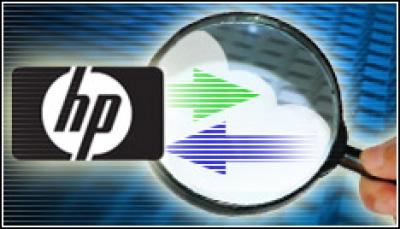When it was launched in 1972, a little handheld instrument called the HP-35 Scientific Calculator soon took on a new identity as the Slide Rule Killer.
Thirty-seven years and gazillions of calculations later, the thin machine small enough to slip into a shirt pocket has now been recognised as one of the world’s most important technical achievements.
It’s called HP-35 because the original model was designed and built by Hewlett-Packard and had 35 keys. It was HP’s first consumer product, and it still, in its many different forms, is a big seller.
The little calculator on 14 April was selected for the prestigious IEEE Milestone in Electrical Engineering and Computing award. It was the 84th such award given by the 125-year-old engineering organization since it started giving them in 1983.
The HP-35 joins a pretty special list as a Milestone awardee. Previous winners have included Volta’s electrical battery in 1799, the transatlantic cable (1866), the first wireless radio broadcast (1906), the spinning disk computer (1956), the first cardiac pacemaker (1957), and satellite television (1962).
Played a Key Role for Countless Engineers
Resource Library:
“The HP-35 helped accelerate the pace of technological change and revolutionized the engineering profession by allowing almost-instantaneous, extremely accurate scientific calculations anywhere and anytime,” said 2008 IEEE President Lewis Terman, whose father, Frederick, was the Stanford engineering professor who urged William Hewlett and David Packard to start their electronics company in the late 1930s.
“The HP-35 made it possible to conduct complicated calculations wherever they were needed, with speed and accuracy that well surpassed the slide rule. It played a key role in the lives and projects of countless engineers and scientists,” Terman said during the presentation of the award on HP’s Palo Alto headquarters campus.
When the HP-35 burst onto the scene, other calculators at the time could only perform four basic functions: addition, subtraction, multiplication and division.
The HP-35 performed all the functions of the slide rule to 10-digit precision and could determine the decimal point or power-of-10 exponent through a full 200-decade range. This combination of features ultimately made the slide rule, which had been used by generations of engineers and scientists, obsolete.
Of course, the slide rule had a good long run. The noted British mathematician William Oughtred (1575-1660) invented it in 1622, and there are still a number of people who use it. In fact, there’s a Web site devoted to its history, and there’s a section of the Computer History Museum in Mountain View, Calif., dedicated to it.
The HP-35 was HP’s first product that contained both integrated circuits and LEDs (light-emitting diodes). Both technologies had been developed in HP Labs, the company’s central research arm.
This little pocket scientific calculator was a specific project that HP co-founder Hewlett himself had requested. At that time, the only computers that could perform transcendental functions such as trigonometric, logarithmic and exponential functions, were bulky machines that couldn’t fit on a desktop, let alone inside somebody’s shirt pocket.
Hewlett challenged HP engineers to take their current desktop computer, the HP-9100, and create a similarly capable device that fit in his shirt pocket. Even as initial market research deemed the $395 (£266) product to be too expensive, HP recognized its significance and the market need and plunged ahead anyway.
While HP expected to sell 10,000 to break even, the demand for the HP-35 exceeded expectations, and more than 100,000 were sold during its first year on the market.
Nowadays, buying one of the new HP calculators will run you anywhere from about $8 (£5.4) to a few hundred dollars, depending on the features you want.
Dave Cochran, the original HP-35 product manager, was on hand at the awards event in Palo Alto on 14 April.
“Mr. Hewlett had only given us one specification: that the calculator be able to slip in and out of his shirt pocket,” Cochran said. “This was a hard task, really hard task. We worked and worked to get the thing compacted down.
“There were a few times I was tempted to call Mr. Hewlett’s tailor and ask him to make the pockets in his shirts larger!”
The HP-35 has morphed into a number of other forms over the course of 37 years. There is a wrist-mounted version that looks like watch, one for the desktop, and some that use other shapes and forms.
An IEEE Milestone plaque recording the award will be permanently displayed at HP Labs in Palo Alto, the site where the HP-35 was originally developed. For more information on current HP calculators, go here.
Fast Facts About the Original HP-35 Scientific Calculator
- The HP-35, named for its 35 keys, was the first handheld calculator to perform transcendental functions such as trigonometric, logarithmic and exponential functions.
- At the time, contemporary calculators could only perform four basic functions – addition, subtraction, multiplication and division.
- When it went on sale in 1972, the calculator cost $395, which is around $2,000 in today’s economy. Despite this relatively high price, HP still managed to sell about 100,000 of them in the first year.
- The now classic “Reverse Polish Notation” (RPN) first used in the HP-35 has become the most efficient way known to computer science for evaluating mathematical expressions.
- In the first three years after its introduction in 1972, sales of the HP-35 Scientific Calculator exceeded 300,000 units.
- Forbes ASAP named HP 35 as one of the 20 “all time products” that have changed the world.
- It was the world’s first handheld scientific calculator with a LED display.
- HP-35 has traveled to the top of Mt. Everest for use in altitude and navigation calculations.
- HP-35 is regularly used to navigate ships.
- HP-35 has been used by astronauts aboard spacecraft to calculate the exact angle of re-entry into the Earth’s atmosphere.





